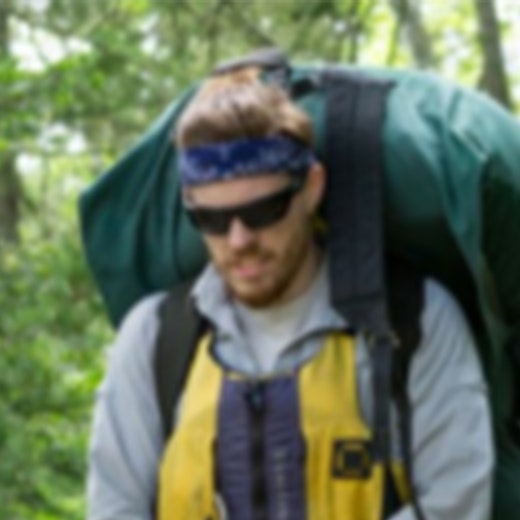After introductions have been made, the docks have been set in place for the season, and all the boats have been accounted for, pre-camp gets right down to business: staff training and... tree planting.
Counselors are given subjects to present, covering a wide variety of topics. Several pots of coffee will be brewed throughout the day, with enthusiastic discussions about everything from risk management in camp and on the trail to the behavior management and social development of campers. These presentations typically take a day or two to get through and make extensive use of scenarios and the past experiences of veteran counselors. And of course, John Erdmann always has a story or two to tell.
Oddly enough, some of the most important results of these presentations are their team-building nature. By the end of pre-camp, we'll have a tightly knit group of counselors who can rely on each other throughout the season. This network effectively creates a safety net of awareness, where communication between counselors and the camp director allow us to react to problems quickly and the judgement to do so confidently.
Another key element of these counselor presentations is the focus on keeping things fresh at camp. Everyone comes with a unique background, and we play to people's strengths to bring in new ideas. Tom Gardner, a veteran counselor from last year, drew upon experience working in a program for urban youth in the Twin Cities, MN. He lead the discussions on camper behavior, prefacing his presentations with the concept of behavioral epigenetics, the study of how nurture interacts with nature to explain behavior and development.
Just when we've hit the limit of our attention spans, John will give us a task paramount to the future of camp; planting trees. Now, in case you were wondering, you cannot simply "plant trees" at Camp Voyageur when the whole peninsula is covered at trees. Before any tree is planted, several balsam trees are cut down, dragged to a pile, and either burned or chipped. The goal of this being to bring back the old-growth forests that once prevailed in Minnesota and the Northwoods in general before humans began altering forest fires and clear-cutting for timber.
Once a sapling is planted, John has us cage the trees so they can't run away. Actually, he doesn't like that joke; we cage the trees so that the deer and snowshoe hares don't eat the saplings down to their stubs. These cages can be found even in the most remote parts of the peninsula, from the point out by the unoccupied Cabin 5, to well behind the archery range.
You can think of these cages like the US school system too. Once they get to a certain size, the trees "graduate" to a bigger cage, and we have about three sizes of cages to represent elementary, middle, and high school. It's a practice in patience, since the type of time it takes to change the forestry of even a small region like the Camp Voyageur peninsula is measured in centuries.
